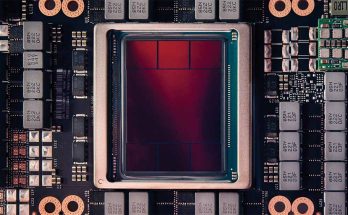“The great chip crisis threatens the promise of Moore’s Law”
MIT Technology Review, June 30, 2021
Computing
by Jeremy Hsu
“A shortage of microchips threatens to slow the decades of innovation fueled by the promise of ever faster, cheaper computing power.”
A year into the covid-19 pandemic, Apple commemorated the growing array of devices featuring its custom M1 chip with great fanfare, including a “Mission Implausible” ad on TV featuring a young man running across the rooftops of its “spaceship” campus in Cupertino and infiltrating the facility to “steal” the breakthrough microprocessor from a MacBook and place it inside an iPad Pro.
Apple’s custom-designed chip is the latest triumph for Moore’s Law, the observation turned self-fulfilling prophecy that chipmakers can double the number of transistors on a chip every few years. The M1 packs 16 billion transistors on a microprocessor the size of a large postage stamp. It’s a marvel of today’s semiconductor manufacturing prowess.
But even as Apple celebrated the M1, the world was facing an economically devastating shortage of microchips, particularly the relatively cheap ones that make many of today’s technologies possible.
Automakers have been shutting down assembly lines and laying off workers because they can’t get enough $1 chips. Manufacturers have resorted to building vehicles without the chips necessary for navigation systems, digital rear-view mirrors, display touch screens, and fuel management systems. Overall, the global automotive industry could lose more than $110 billion to the shortage in 2021.
Production has also slowed for smartphones, laptops, video-game consoles, TVs, and even smart appliances, all because of the lack of cheap microchips. Their use is so essential and so widespread that some observers think the chip crisis could threaten the global economic recovery from the pandemic.
The global shortage is shining a harsh spotlight on the semiconductor industry’s ability to deliver cheaper and more powerful microchips. The longstanding promise of chips with ever more capabilities inspired engineers, programmers, and product designers to create generations of new products and services. Moore’s Law has been more than just a road map for the semiconductor industry—it has governed technological change over the last half-century.
Now that promise of more computing power everywhere is crumpling, but not because chipmakers have finally run up against the physical limits of technology to make ever smaller transistors. Instead, the growing costs of sustaining Moore’s Law have encouraged consolidation among chipmakers and created more choke points in the immensely complex business of chip production.
About the Author:
Jeremy Hsu is a technology and science journalist based in New York City.




